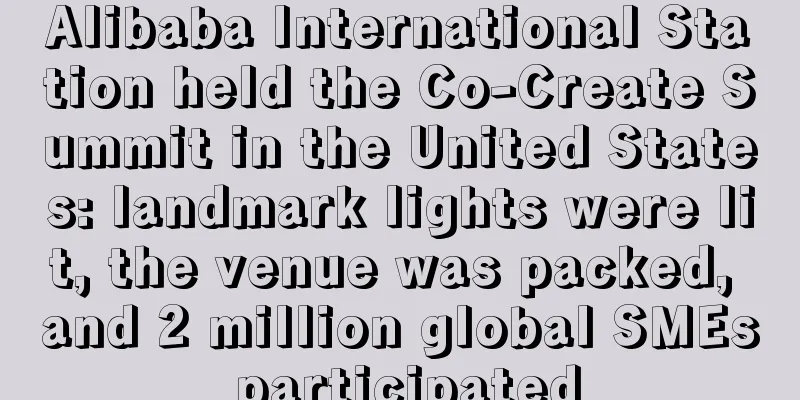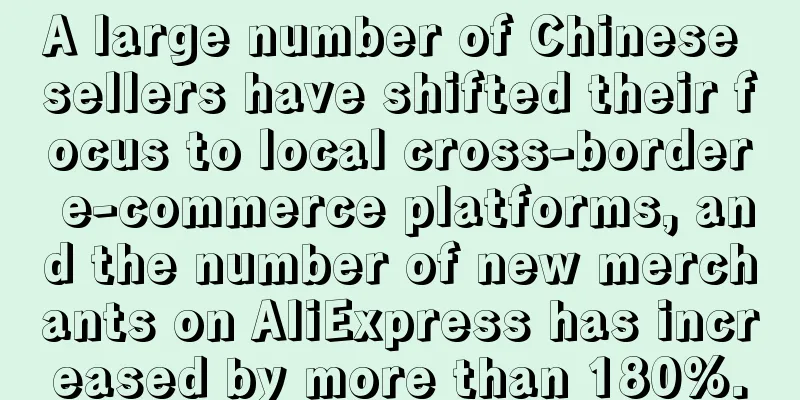The number of million sellers has increased by 36,000, and they will invest heavily in these 6 points!

|
A seller joked: No way? Are you still selling on Amazon? Jokes aside, a research institute recently released the sales of sellers in the past year. There are 60,000 "millionaire sellers" alone, a 150% increase from 2018. Compared with small sellers, it is because they will spend a lot of money on these 6 points ...
Amazon's million sellers increase to 60,000
2021 has come to an end, let’s take a look at the achievements of the past year.
Last year, Amazon's global gross merchandise volume ( GMV) reached $600 billion. Including Amazon's own stores and third-party sellers, GMV has doubled in three years, with most of the growth coming from third-party sellers.
According to estimates by Marketplace Pulse, a US data research organization , the GMV of Amazon's own stores was US$210 billion, a 56% increase from 2019; the GMV of third-party sellers was US$390 billion, a 95% increase from 2019.
In terms of GMV contribution, third-party sellers currently account for the majority (about two-thirds). If their GMV is compared to a country's GDP, then third-party sellers are equivalent to the world's 37th largest economy, comparable to Denmark and Malaysia.
And where do you rank among the group of third-party sellers?
Currently, there are more than 6 million third-party sellers and more than 1 million active sellers. Marketplace Pulse divides these sellers into several levels. Among them, there are 350,000 sellers with GMV exceeding $100,000, 60,000 sellers with GMV exceeding $1 million, and 3,000 sellers with GMV exceeding $10 million.
Of these sellers, more than half sell on Amazon’s US site; the rest sell in 19 other markets.
According to eMarketer, Amazon's market share in the United States in 2021 is about 41.4%. Marketplace Pulse shows that because third-party sellers account for at least 60% of Amazon's GMV, its share of US e-commerce is 25%. In other words, in the United States, for every dollar consumers spend, 25 cents goes to Amazon's third-party sellers.
Having said that, although it is normal that the larger the GMV, the fewer sellers there are, the editor has discovered an interesting phenomenon, that is, the number of sellers with higher GMV is growing faster than that with lower GMV.
Taking the data from 2018 as a reference, there were 200,000 companies with GMV exceeding US$100,000, 24,000 companies with GMV exceeding US$1 million, and 890 companies with GMV exceeding US$10 million. The growth rates of the number of sellers were 75%, 150% and 237%, respectively.
So, is it no longer a dream to become a "millionaire seller"? But if you don't work hard, the dream will remain just a dream.
The "Golden 6 Points" of Million Sellers
Recently, Jungle Scout released a report. The report surveyed 5,000 sellers, including millionaire sellers and non-millionaire sellers. By comparing the two groups of sellers, Jungle Scout summarized some sales experience of millionaire sellers, which sellers may wish to refer to.
1. Focus on strengthening marketing on and off Amazon
A whopping 80% of top-100 million sellers use some form of Amazon advertising or marketing, including Sponsored Product Ads and A+ Content, compared to 63% of non-top-100 million sellers .
Advertising on Amazon is the most popular marketing method, followed by Google Ads. In addition, millionaire sellers also use Facebook, Instagram and other advertising more than non-millionaire sellers .
2. Choose to start a business without hesitation
Millionaire sellers tend to grow their businesses faster and are more willing to invest than non-millionaire sellers. The 2021 survey found: 44% of millionaire sellers get their Amazon business up and running in six weeks or less, compared to only 27% of non-millionaire sellers. 42% of million-dollar sellers spent at least $5,000 in “startup funds”; among non-million- dollar sellers, only 35% spent more than $5,000.
Many sellers said that if they could go back in time, they would choose to invest more time and money into their business earlier in the early stages.
3. The vast majority of the millions of sellers use the private label business model
Among all Amazon's business models, the private label model is the most popular among the million-dollar sellers, with 81% of sellers using it . Even among non-million-dollar sellers, 64% of sellers choose this model.
Greg Mercer, founder, CEO and million-dollar seller of Jungle Scout, believes the magic of the private label business model is: - Sellers do not need to compete with other sellers for the Gold Shopping Cart and can have their own listings. - Unlike the arbitrage business model, sellers have an unlimited source of inventory and do not need to constantly search for new inventory. - Sellers can build a real brand and thereby gain valuable brand equity.
According to the advice of millions of sellers, sellers using the private label model can make greater use of social media and build a strong brand influence, which can effectively develop and expand their Amazon business.
4. Sell as many products as possible
According to the survey, 72% of millionaire sellers have 20 or more active product listings on Amazon. In contrast, 70% of non-millionaire sellers have only 10 or fewer product listings . 34% of millionaire sellers have 250 or more products on Amazon.
Because having more products means more sales opportunities. So according to the experience of millions of sellers, they usually: - Buy the best-selling products in your field and use them as your own reference. - Read reviews of competing products to understand what customers like and then make changes to your own products. - Every time they update their inventory, they also make improvements to the product’s shape, material, color, etc.
5. Spend more time on your Amazon business
In the survey, 53% of millionaire sellers said they spend more than 30 hours a week on their business, while this proportion was only 16% among non-millionaire sellers .
In addition, the two types of sellers also focus on different aspects of their time spent on their Amazon business: millionaire sellers focus on growth-oriented areas of their business, such as marketing their products on and off Amazon, monitoring financial status, and getting more customer reviews; non-millionaire sellers are more focused on finding products to sell.
Some analysts pointed out that the reason for their different focus is that millions of sellers have been selling on Amazon for a longer time, so they know what they want better.
6. How millions of sellers escaped from the bottleneck
No matter what you do, you may encounter bottlenecks, and Amazon is no exception. Sellers may encounter difficulties in selecting products, negotiating with suppliers, wrestling with PPC campaigns, and monitoring progress.
According to the seller’s experience, when overcoming difficulties, you can ask yourself a few questions, and then find the right solution based on the answers: - What is stopping you from expanding your business? - Should we optimize existing products or add more SKUs?
Maybe some sellers’ sales on Amazon are not up to their expectations, but there is no need to feel frustrated, because more than three-quarters of Americans believe that online shopping is the future of retail , and Amazon is their favorite way to shop. More and more consumers are turning to e-commerce, which also means that sellers and businesses have more opportunities to win customers. Million sellers Sales Tips |
<<: U.S. e-commerce shoppers are moving to mobile
>>: Shopify's Q4 revenue was $1.38 billion, and the market size reached $175 billion
Recommend
What is Cornershop by Uber? Cornershop by Uber Review, Features
Cornershop by Uber is the easy way to order fresh...
What is CEL.ro? CEL.ro Review, Features
CEL.ro is a Romanian e-commerce platform that sell...
Affected by the snowstorm, many Amazon distribution centers were shut down
Christmas in the United States has just ended, an...
Halloween products are gaining popularity, and some people are chartering ships to stock up for the peak season!
It is August now , and the peak season in the sec...
Amazon is launching another Prime promotion to save sales. Sellers: Thanks for the invitation, but it’s not necessary…
Not long ago, NDR (Ned Davis Research), a well-kn...
What is Haisun erp? Haisun erp Review, Features
<span data-docs-delta="[[20,{"gallery"...
What is Shenzhen Weiman Cloud Computing Co., Ltd.? Shenzhen Weiman Cloud Computing Co., Ltd. Review, Features
Shenzhen Weiman Cloud Computing Co., Ltd. was est...
What is Wildberries? Wildberries Review, Features
Wildberries is a Russian online platform for shoes...
What is gadgetupnext? gadgetupnext Review, Features
Gadgetupnext loves every passion and interest on t...
What is Sinotrans? Sinotrans Review, Features
Sinotrans (Sinotrans Co., Ltd.) is the unified ope...
What is Finish Line? Finish Line Review, Features
Finish Line is a leading sports brand footwear and...
E-commerce sales reach 564 million euros! Mango establishes a new online platform
It is reported that recently, Spanish fashion gia...
American home furnishing retailer HomeGoods enters the e-commerce field!
HomeGoods was founded in 1992 and currently has 8...
Columbia flip-flop sales grew against the trend, with comfortable footwear accounting for 75% of sales!
According to the eltiempo website, due to the red...
Sales in the first month of entry reached 100,000 US dollars, and this channel continues to explode this year!
Recently, the 2021 SHOPLINE Independent Station S...









